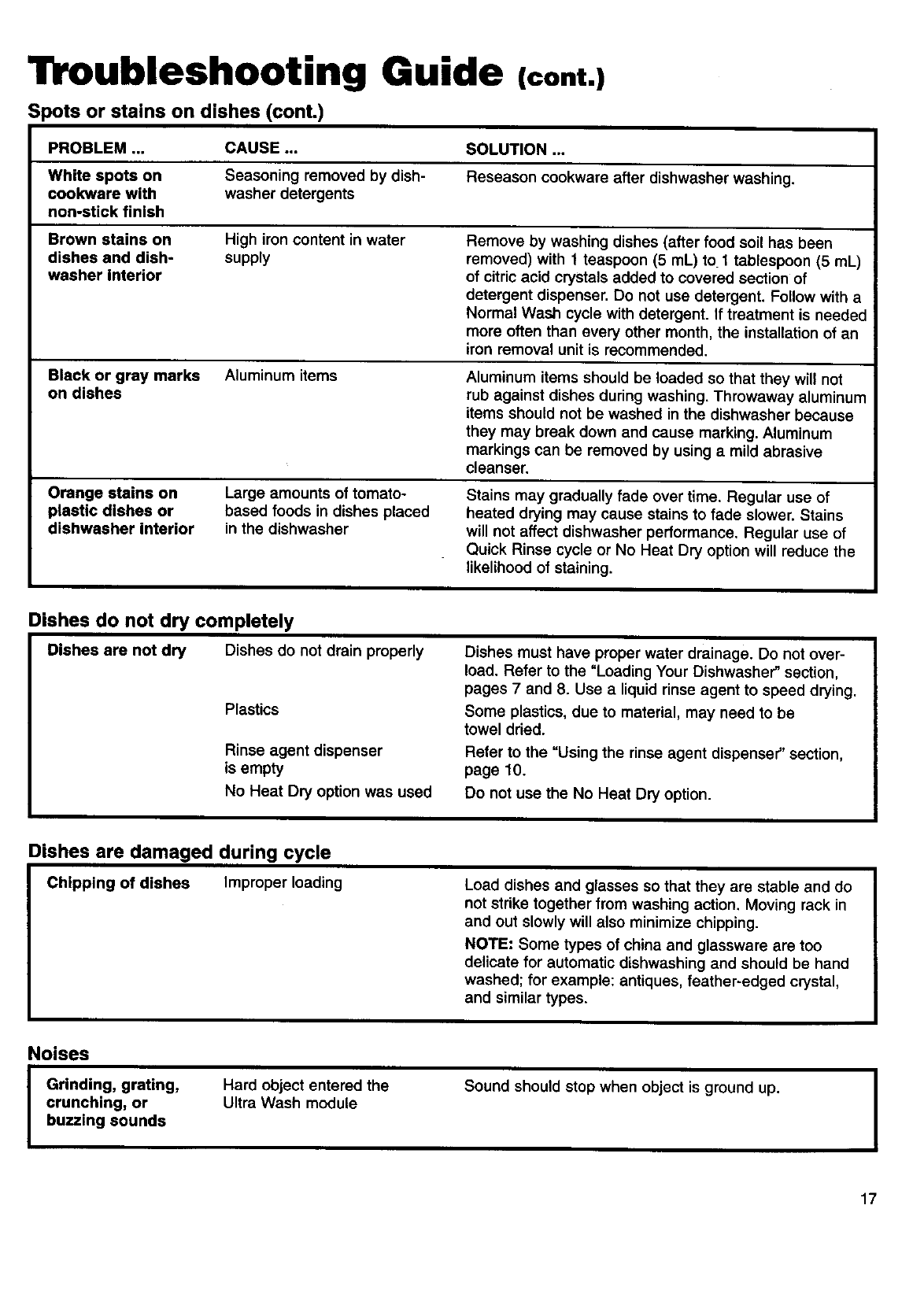
Troubleshooting Guide (cont.)
Spots or stains on dishes (cont.)
PROBLEM ... CAUSE ... SOLUTION .,.
White spots on Seasoning removed by dish- Reseason cookware after dishwasher washing.
cookware with washer detergents
non-stick finish
Brown stains on High iron content in water Remove by washing dishes (after food soil has been
dishes and dish- supply removed) with 1 teaspoon (5 mL) to 1 tablespoon (5 mL)
washer interior of citric acid crystals added to covered section of
detergent dispenser. Do not use detergent. Follow with a
Normal Wastl cycle with detergent. If treatment is needed
more often than every other month, the installation of an
iron removal unit is recommended.
Black or gray marks
on dishes
Orange stains on
plastic dishes or
dishwasher interior
Aluminum items
Large amounts of tomato-
based foods in dishes placed
in the dishwasher
Aluminum items should be loaded so that they will not
rub against dishes during washing. Throwaway aluminum
items should not be washed in the dishwasher because
they may break down and cause marking. Aluminum
markings can be removed by using a mild abrasive
cleanser.
Stains may gradually fade over time. Regular use of
heated drying may cause stains to fade slower. Stains
will not affect dishwasher performance. Regular use of
Quick Rinse cycle or No Heat Dry option will reduce the
likelihood of staining.
Dishes do not dry completely
Dishes are not dry Dishes do not drain properly
Plastics
Rinse agent dispenser
is empty
No Heat Dry option was used
Dishes must have proper water drainage. Do not over-
load. Refer to the "Loading Your Dishwasher" section,
pages 7 and 8. Use a liquid rinse agent to speed drying.
Some plastics, due to material, may need to be
towel dried.
Refer to the "Using the rinse agent dispenser" section,
page 10.
Do not use the No Heat Dry option.
Dishes are damaged during cycle
Chipping of dishes Improper loading
Noises
I rinding, grating,
crunching, or
buzzing sounds
Hard object entered the
Ultra Wash module
Load dishes and glasses so that they are stable and do
not strike together from washing action. Moving rack in
and out slowly will also minimize chipping.
NOTE: Some types of china and glassware are too
delicate for automatic dishwashing and should be hand
washed; for example: antiques, feather-edged crystal,
and similar types.
Sound should stop when object is ground up.
I
I
17


















